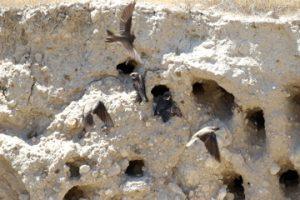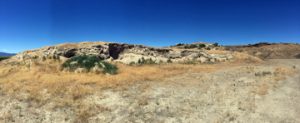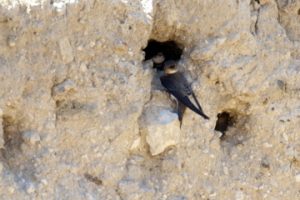Summer breeding migrants
In the Klamath Basin the winter raptor spectacle is a huge draw for bird lovers, but the summer months are very low on visitors. This is odd, as Malheur NWR in eastern Oregon draws large numbers of spring and summer birders, all checking out the large and diverse habitat for breeding. In June 2011 I spent a long weekend at Malheur and found it so wonderful I went back regularly in late spring thereafter. Breeding birds were numerous and diverse, including not only waterbirds from grebes to terns, but landbirds including sought-after migrants like Bobolink and Eastern Phoebe. These two species reach their farthest western breeding territories in eastern Oregon. I wondered why the same attention was not accorded to the Klamath Basin, and that is when I began thinking about doing a year-round survey.
In 2013 I decided it would be worthwhile to visit the basin every month and document these changes. So for the next 3 years we did so, my companions in this adventure being two similarly committed friends – Terence Philippe and Sooney Viani. Towards the end of the study we were joined by Brandon Breen, who joined us on the counts and also entered the database in ebird. We have continued to monitor, although with bi-monthly, rather than monthly counts. This article is the first of several about our findings. I chose to write about the breeding season because so little has been written about it and it was so rewarding.
As winter wanes in the Klamath Basin, many species (especially waterfowl) leave to breed farther north. But surprisingly, the influx of birds in May/June coming from the south and east to breed is about equal to the number that left. And arguably the most spectacular event is the uncountable number of waterbirds that breed on algal mats in Tule Lake. In the spring of 2016 we learned from John Beckstrand, biologist at the refuge, that the Huge breeding colony of Eared Grebes and other waterbirds could be seen from shore. Nesting is dependent on the development of algal mats, which supply the material for building floating nests. We tried to find it in June but it was too soon, On July 7 Terence and I were successful, and thrilled. Here are my field notes.
“Across from the refuge headquarters on Hill Road, a very bumpy dirt road borders the north side of Discovery Marsh. About two miles in there was a large body of open water, and a yellow/orange algal mat stretched beyond the tules that were along the shore. Beyond the mat and totally separate from it was a long string of hundreds of active nests. There were no nests on the mat itself but it was being used as building material. Viewing was almost at the limit of Gary’s scope but we could see that most birds were Eared Grebes. There were also scattered Forster’s Tern, Redhead, Ruddy Duck and Shoveler nests. Present also were Ring-billed Gulls, Snowy Egrets, and Black-crowned Night Herons. They were presumed to be nesting, although not seen on nests. Visibility was about at the limit of Gary’s scope so not as good as we need. Go next July and do it right.”
A week later I returned with Gary Shaffer, a very fine nature photographer, who photographed the site. Theis phenomenon is unknown to most local birders, although the resident staff know them well. There is another such algal mat nesting area that can barely be seen from the south shore of Tule Lake.
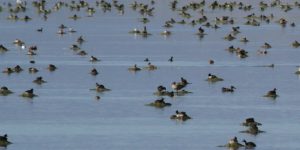
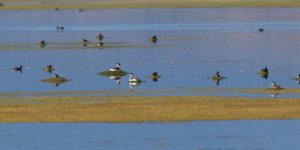
Another exciting find for us was a colony of Bank Swallows nesting in cavities on the vertical face of a sandy mound in an abandoned quarry in the refuge far east side). It is along a road on the far east rarely traveled by birders, so is undetected to many. This species is not endangered but its breeding habitat is so restricted that it needs protection. There is just one colony in the refuge, although there is at least one more in the Klamath Basin. We came upon it by chance in May 2015 when we approached the quarry from the east, instead of our usual route from the west. There were hundred of nest holes and we estimated at least 200 were occupied. Gary Shaffer also photographed this site and also took closeups of adults feeding young.
